Module 7
1. Module 7
1.37. Page 4
Module 7: Trigonometry
 Self-Check
Self-Check
Solve each right triangle.
SC 1. In ΔPQR, ∠Q = 90°, p = 5 cm, and r = 12 cm. Solve ΔPQR. Round to one decimal place when appropriate.
SC 2. In ΔABC, ∠C = ∠A = 30° cm, and a = 6 cm. Solve ΔABC. Round to one decimal place when appropriate.
Deciding on a Trigonometric Ratio
In most practical trigonometric problems you will not be trying to find all the missing side lengths and angle measures. You will usually have to decide which ratio is required to save yourself time.
Example 3
Eldon is watching a hot-air balloon drifting over a cellphone tower 200 m away. Using his clinometer, Eldon measures the angle of elevation of the balloon. Find the height, to the nearest metre, of the balloon if the angle of elevation is 27°.
Solution
Draw a diagram.
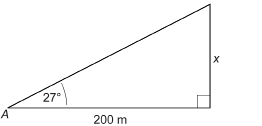
The side length of the triangle to be found is the height of the balloon, x, which is the length of the opposite side from the given angle of elevation, 27°.
The given side (the distance to the balloon) is the side adjacent to the angle of elevation.
Since the opposite side and the adjacent side will be used in this problem, you will need the tangent ratio.
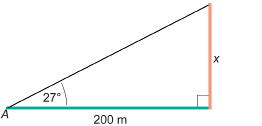
SOH-CAH-TOA
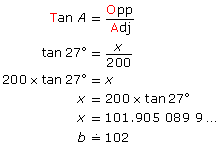
The balloon is approximately 100 m above the ground.
 Self-Check
Self-Check
Solve each problem by first drawing a diagram.
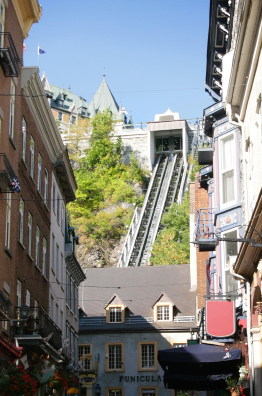
© pink candy/17199442/Fotolia
SC 3. The funicular railway (Funiculaire du Vieux-Québec) in Québec City, built in 1879, carries passengers from the historic district of the lower town to the upper town. It is 64 m in length with a vertical height of 59 m. To the nearest degree, what is the angle at which the tracks are inclined to the horizontal?
SC 4. A garden plot in the corner of Iris’ yard is in the shape of a right triangle, as illustrated. What is the plot’s area? Round your answer to the nearest square foot.
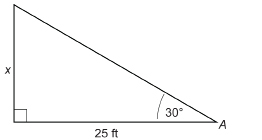
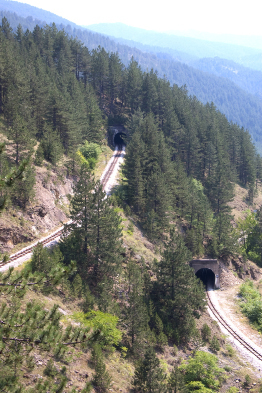
© MTomicic/19334317/Fotolia
SC 5. British Columbia joined Confederation in 1871 on the condition that a railroad would be built to join the province to the rest of Canada.
The transcontinental railroad was competed in 1885. However, the original line through the Kicking Horse Pass had a grade so steep it presented a danger to trains and their crews. Near Field, two spiral tunnels were completed in 1909. These tunnels were constructed inside the mountains to lengthen the track and reduce the grade’s steepness. The portals of the Upper Tunnel can be seen in the photograph.
A train travelling east and entering the Lower Tunnel travels 891 m before exiting the tunnel 15 m higher than when it entered. What is the Lower Tunnel’s average slope to the nearest tenth of a degree?
 Mastering Concepts
Mastering Concepts
The spiral threads on a bolt may be modelled by wrapping a paper right triangle around a cylinder.

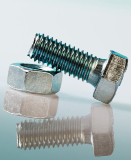
© Diego Cervo/shutterstock
A bolt with a 1-in diameter and a coarse thread, similar to the one in the photograph, must be turned all the way eight times around to advance the bolt 1 in onto the nut. What is the slope of the threads to the nearest tenth of a degree?